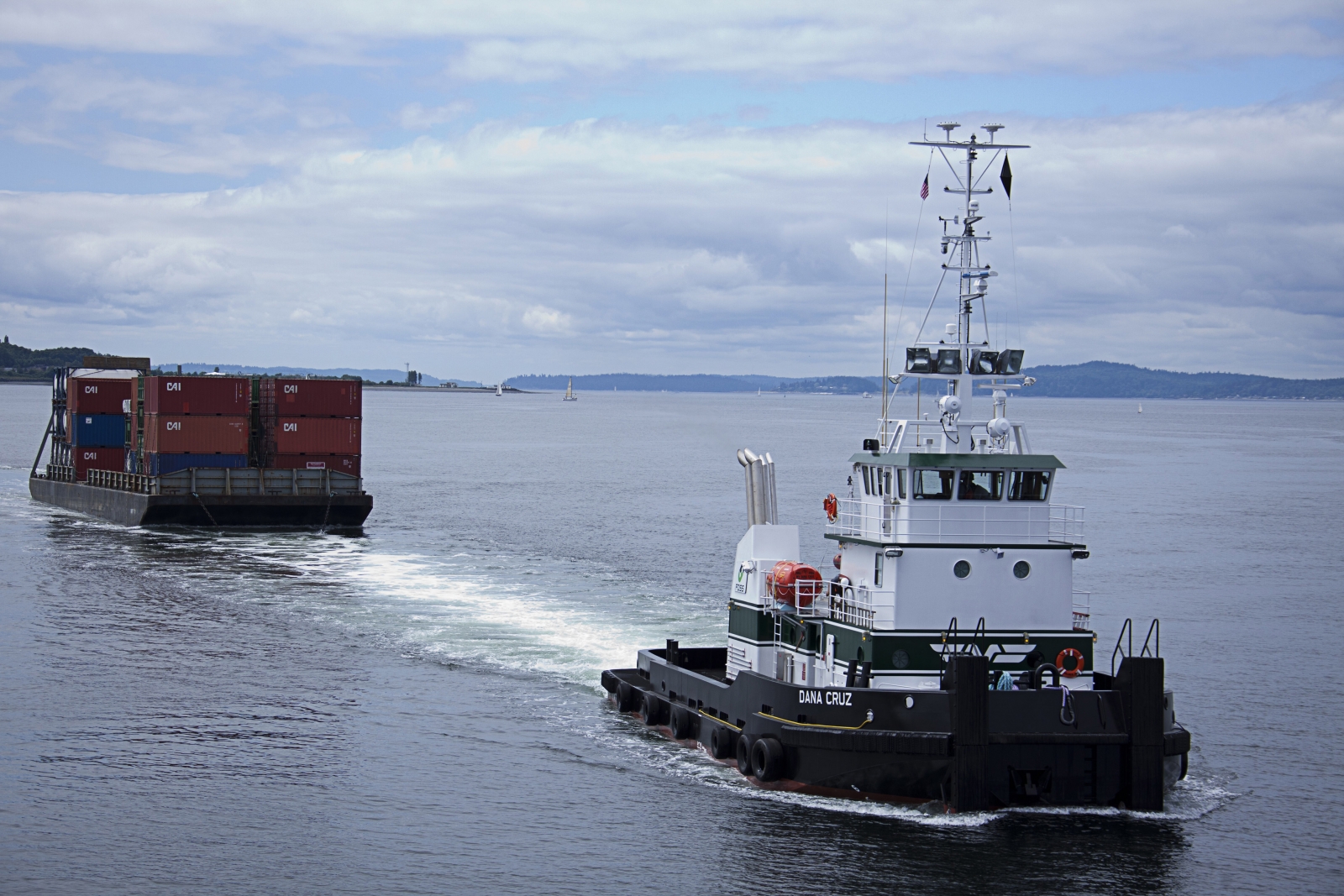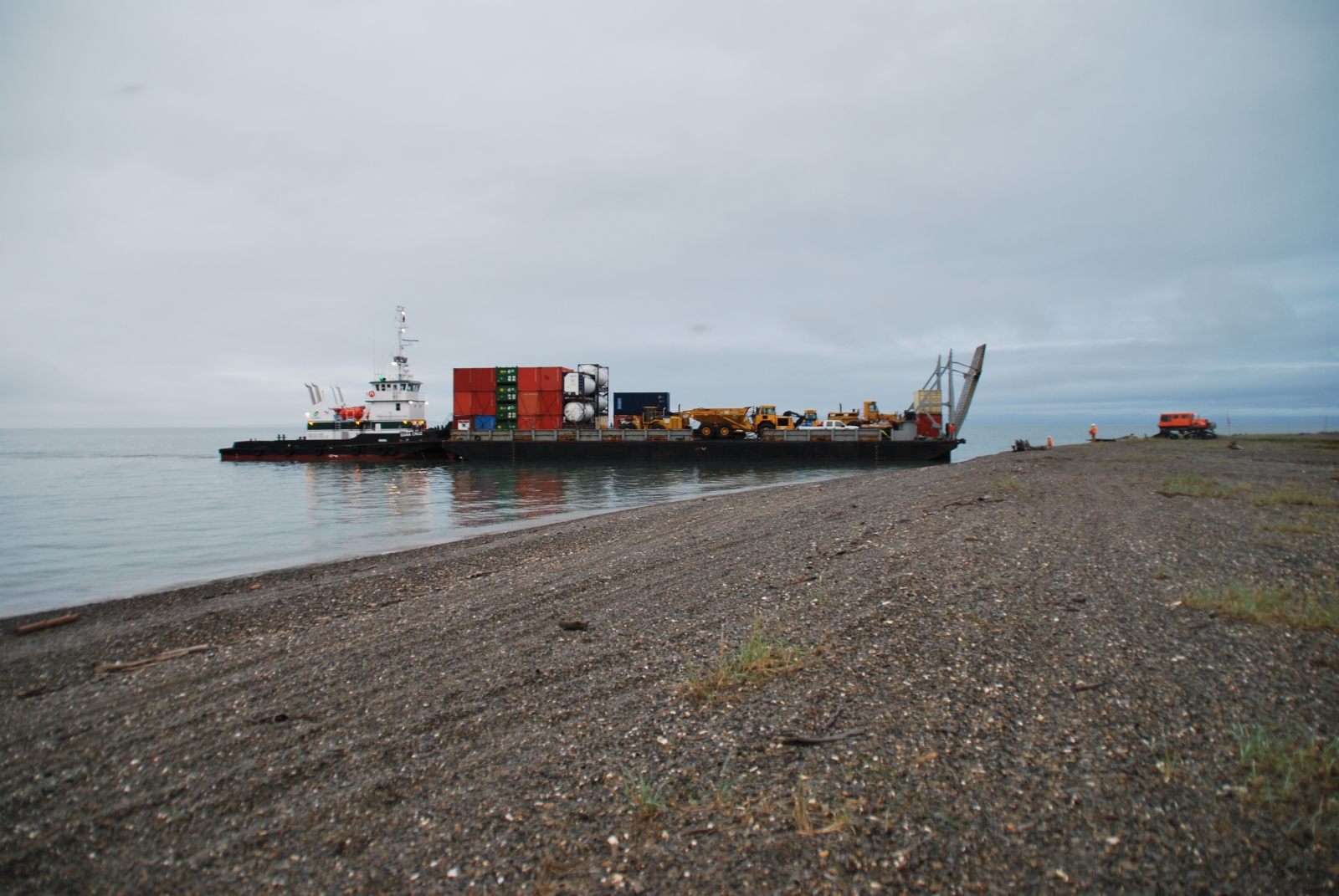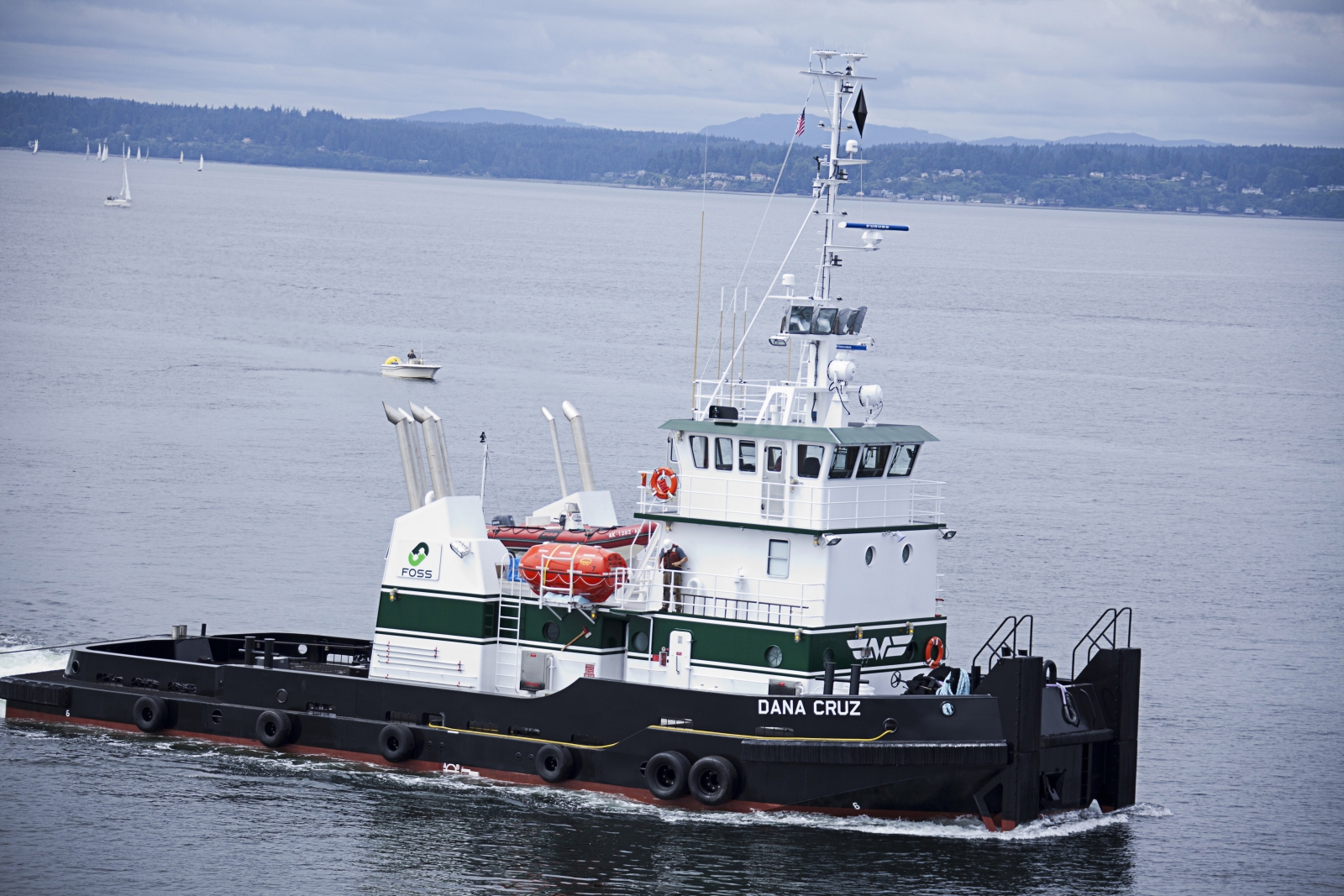One look at the 92-foot tug Dana Cruz and you might think that she will spend all of her time in the inland waters of Alaska. After all, she is built with an extreme shallow draft and push knees on the bow. But almost as if to demonstrate her versatility in the Alaskan theater of operations, the little tug took on a job at the far end of the Aleutian Island chain this past summer, that is about 600 miles west of Dutch Harbor. You can't go much farther west without shipping a Russian translator within your crew.
 |
|
The new Foss tug Dana Cruz has proven to be as versatile at towing or pushing barges as landing a barge on a remote Alaskan beach to support a construction project. (Photo courtesy Foss Maritime)
|
This little 1,800-hp tug has already proven her versatility with projects in a variety of Alaskan scenarios before spending the winter months resting up in Seattle. Dana Cruz, with steel hull and aluminum superstructure was built by Fred Wahl Marine of Reedsport, Ore. The summer 2010 season was her first.
Alaska-based Cruz Marine and Seattle-based Foss Maritime teamed up to build Dana Cruz, the first of a series of shallow-draft, ice-strengthened tugboats, known as the King River class, for service in Alaska.
A sister ship, Millie Cruz, was launched from the same shipyard earlier this year and will be working directly for Cruz Construction, while Dana Cruz is on three-year bareboat charter to Foss, intended to support construction and engineering projects in remote and/or shallow-draft environments.
 |
|
Dana Cruz lands a barge on an Alaskan beach. (Photo courtesy Foss Maritime)
|
These two tugs are shallow-draft designs intended to work Alaska's western rivers and coastline. This summer's assignments could see the sturdy tug operating on the Yukon or any of Alaska's western rivers or almost anywhere in near-coastal waters of the Bering or Chukchi Sea.
In typical operation she has been operating with a 150-foot to 200-foot multi-purpose barge.
Dana Cruz, with propulsion gear tucked away within her tunnel-design bottom configuration, is powered by three Caterpillar C-18 diesels generating a total of 1,800 hp. She also has Cat auxiliary power generators. In normal ballast, the tug has draft of only 3 feet 9 inches.
Cruz Marine, a unit of Cruz Construction Inc., is part of a company founded in 1979 by Dave and Dana Cruz. The company provides heavy construction services, remote logistics and tundra transport in some of Alaska's most difficult environments. Previously the company made heavy use of a 25-foot tug combined with a 150-foot barge. Along with construction of these two new tugs, the company is also accepting delivery of a new 200-foot ramp barge for service in the same area.
In other Foss news, the company is currently in the midst of upgrading and converting one of its Dolphin tugs with the same hybrid technology with which it outfitted its hybrid-power tug Carolyn Dorothy in 2008.
The 78-foot Campbell Foss was introduced in 2006 with 5,080-hp worth of straightforward Caterpillar power with Rolls-Royce z-drives. As part of her conversion, Campbell Foss will keep her main engines while being equipped with about 80 new storage batteries, motor generators, and sophisticated control equipment. The power train uses the main engines to power propeller shafts directly when necessary, but also to turn motor generators that produce electricity and send it to storage batteries for additional modes of propulsion. The control system ties all the systems of direct power, electrical generation and electrical use together.
 |
|
The Foss tug Dana Cruz was built at the Fred Wahl Marine construction company, of Reedsport, Ore. She is 92 feet long with 1,800 hp from triple screws. (Photo courtesy Foss Maritime)
|
Conversion of the Campbell Foss is being done with a grant from the California Air Resources Board and with assistance from the Port of Los Angeles and the Port of Long Beach.
While a number of U.S. and Canadian companies have announced plans for hybrid or 'green' propulsion in new tugboats, so far only Foss Maritime, working with its engineering partners, has found the right formula to actually get one built and working, with another one now being converted to the same propulsion scheme.
The company's original hybrid tug was outfitted with 126 12-volt, gel-cell storage batteries that weigh about 18,000 pounds, according to design specifications. Company engineers report that they have since found ways to reduce the number of required batteries and found ways to save space and weight, thus being able to fit the same equipment into the relatively confined engine room space of Campbell Foss. However, the original hybrid tug concept represented by Carolyn Dorothy involved the use of smaller and lighter main engines which are Cummins QSK-50 diesels with Cummins auxiliary power generators.
The newly converted Campbell Foss will retain her Cat main engines and generators while making room for about 80 storage batteries, two Siemens motor-generators (one for each carbon fiber shaft) and a large switchboard and DC bus housed between the two main power plants.



